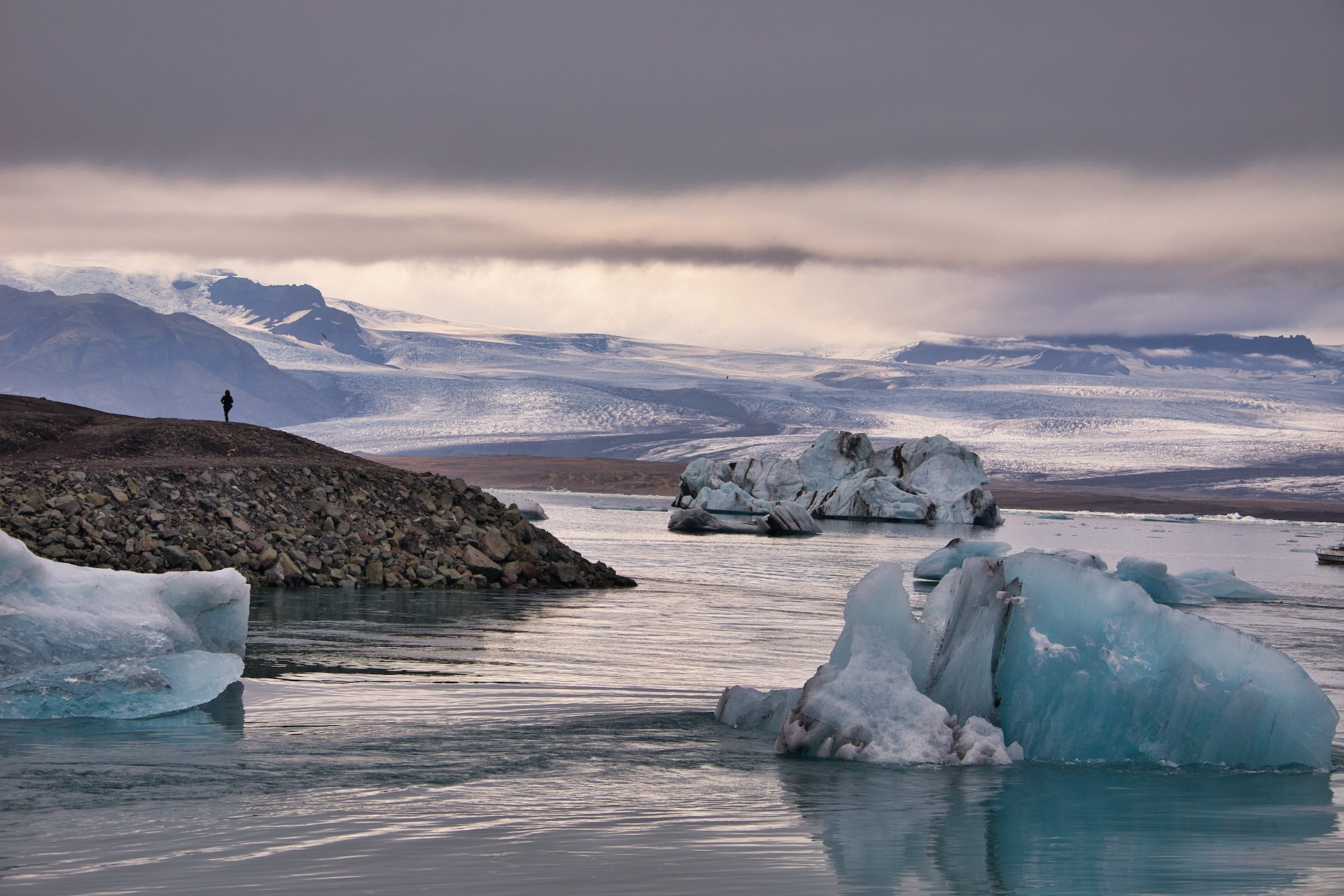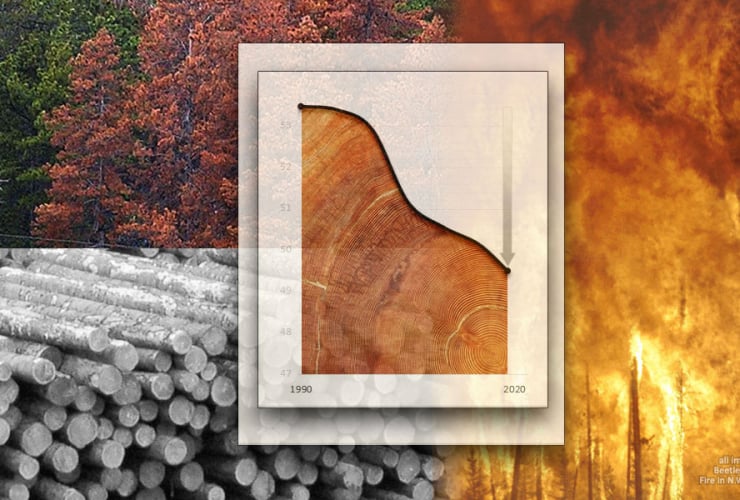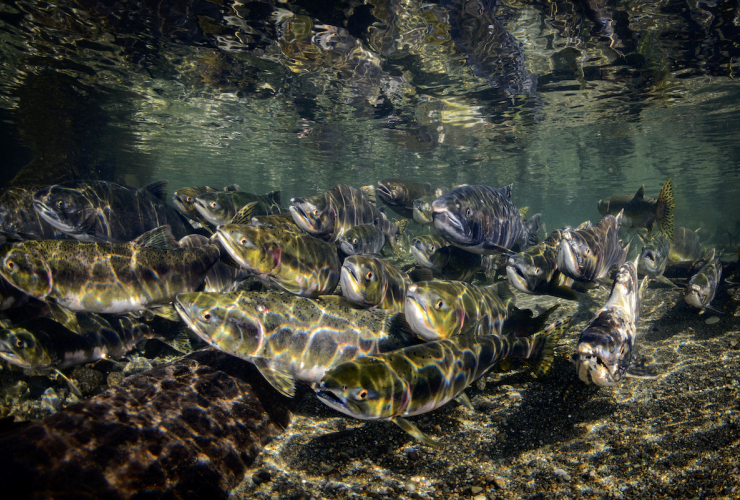This story was originally published by The Guardian and appears here as part of the Climate Desk collaboration.
An expedition of scientists and an artist is deploying underwater microphones in the ocean off Greenland to record and preserve the soundscape of melting icebergs.
The hydrophones will record sounds every hour for two years before being collected, harvested for data and the recordings turned into an acoustic composition.
The instruments are being lowered to different levels and temperatures to record earthquakes, landslides, wildlife, pollution and meltwater, creating an archive of the “ocean’s memory.”
“What you’re hearing in the hydrophones is a snapshot of time,” Siobhán McDonald, an Irish artist, said on Tuesday, speaking from the expedition vessel. “It’s like a time capsule.”
The expedition has deployed five moorings with hydrophones — and 12 moorings in total — in the Davis Strait, an Arctic gateway between Greenland and Canada.
McDonald plans to work with a composer to incorporate the recordings, which are to be collected in 2024, into an acoustic installation that will explore humanity’s impact on the ocean. She will also do paintings, sculptures and other works based on the trip.
“I’m interested in hearing the acoustic pollution. The sea levels are rising and that will have an impact I’d imagine on the sound range and on all the biodiversity. Sound is fundamental in the ocean and Arctic animals. Hearing is fundamental to communication, breeding, feeding and ultimately survival. It speaks of the necessity of paying attention to the pollution we are causing to the ecosystems around us.”
Funded by the US National Science Foundation’s polar program, the 21-strong team of researchers from Europe, the U.S. and Canada has been at sea for four weeks studying sea salinity, whale migrations, ice floes and other phenomena. The material will be used in scientific analysis and artworks including paintings, sculptures and films.
The expedition experienced strong wind, rain and snow and coincided with the calving of the Nuup Kangerlua glacier. The researchers are to return to the port of Nuuk, in western Greenland, on Oct. 22.
The initiative came amid growing evidence that Greenland’s melting ice cap — trillions of tonnes have poured into the ocean — will cause major sea level rises.
The results of fossil fuel burning will cause a minimum rise of 27 centimetres from Greenland alone, according to a recent study in the journal Nature Climate Change. A separate study last year found a significant part of Greenland’s ice sheet was on the brink of a tipping point, after which accelerated melting would become inevitable even if global heating is halted.
McDonald said she had noticed less ice compared with her last visit to Greenland in 2017. “The collapse of the Greenland ice cap is one of the tipping points I am working with, a time that may already have passed.”
Even so, marine life appeared to be adapting, she said. “One major thing we discovered is that way up high here in the Arctic life is still thriving. Although the seascape may look barren, it is alive with possibilities. Some of the hydrophones from another expedition came back looking like alien creatures shuffling out of the Greenland ocean. Lichens and tiny plants were living in symbiosis with rusted surfaces.”
McDonald also studied the release of methane from melting permafrost and similarities between Irish peat bogs and soil exposed by vanishing glaciers, which will feature in an exhibition at the Model, an arts centre in County Sligo, next year.
McDonald’s project received support from the European Commission, the Arts Council of Ireland, Trinity College Dublin, Monaghan county council, Creative Ireland and the non-profits GLUON and the Ocean Memory Project.





Comments